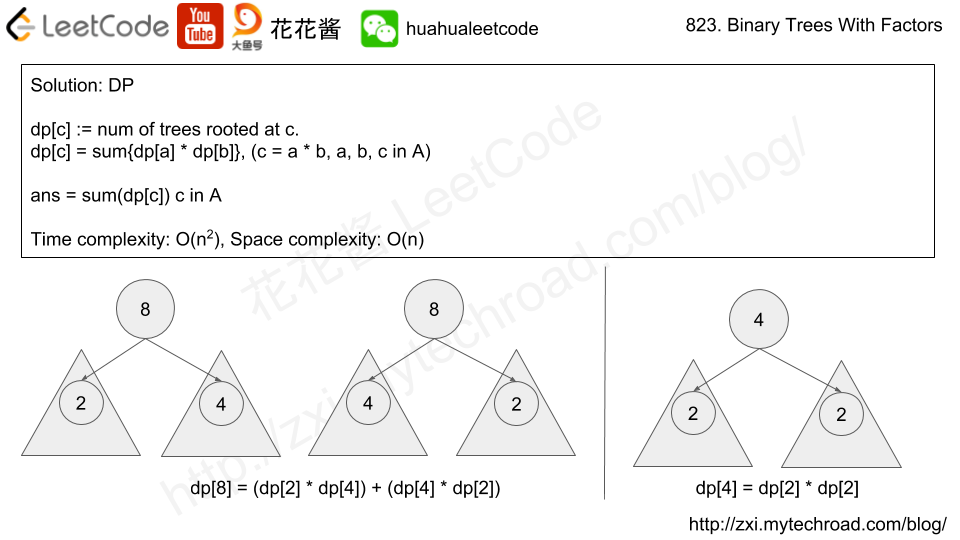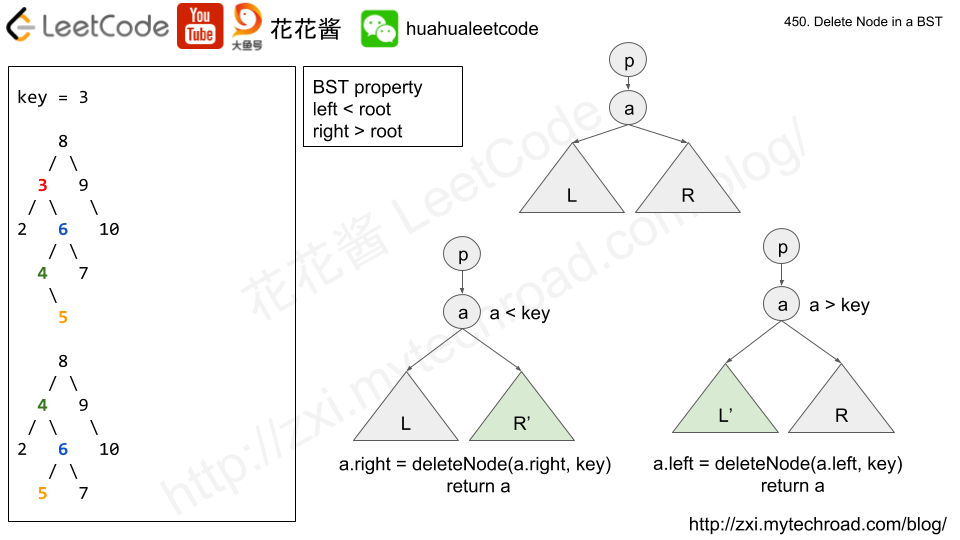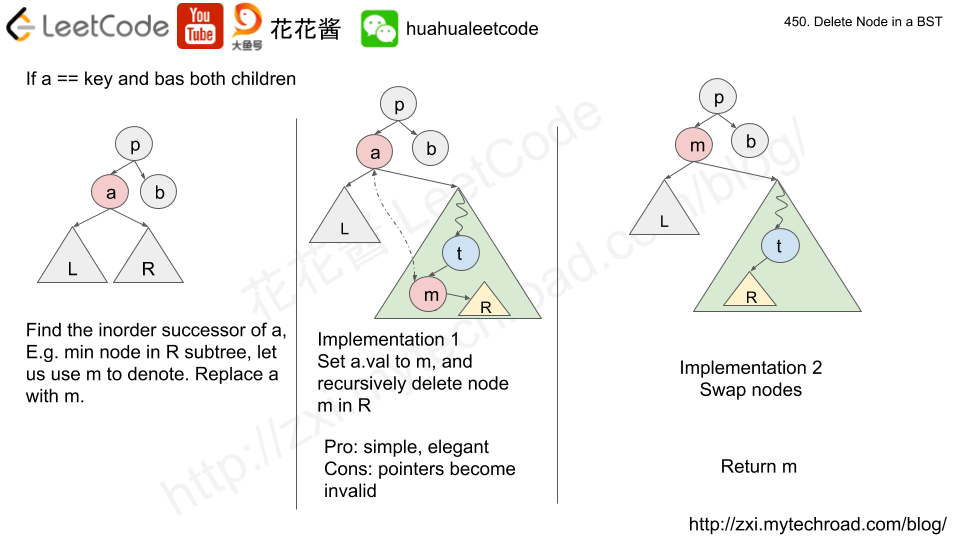Problem
题目大意:给你一些可以重复使用的数字问能够构成多少种不同的特殊二叉树(根结点的值需为子节点值的乘积)。
https://leetcode.com/problems/binary-trees-with-factors/description/
Given an array of unique integers, each integer is strictly greater than 1.
We make a binary tree using these integers and each number may be used for any number of times.
Each non-leaf node’s value should be equal to the product of the values of it’s children.
How many binary trees can we make? Return the answer modulo 10 ** 9 + 7.
Example 1:
Input:A = [2, 4]Output: 3 Explanation: We can make these trees:[2], [4], [4, 2, 2]
Example 2:
Input:A = [2, 4, 5, 10]Output:7Explanation: We can make these trees:[2], [4], [5], [10], [4, 2, 2], [10, 2, 5], [10, 5, 2].
Note:
1 <= A.length <= 1000.2 <= A[i] <= 10 ^ 9.
Solution: DP
Use dp[i] to denote the number of valid binary trees using the first i + 1 smallest elements and roots at A[i].
dp[i] = sum(dp[j] * dp[i/j]), 0 <= j < i, A[i] is a factor of A[j] and A[i] / A[j] also in A.
A[i]
/ \
A[j] (A[i]/A[j])
/ \ / \
..... .....
ans = sum(dp[i]), for all possible i.
Time complexity: O(n^2)
Space complexity: O(n^2)
C++
|
1 2 3 4 5 6 7 8 9 10 11 12 13 14 15 16 17 18 19 20 |
// Author: Huahua // Running time: 53 ms class Solution { public: int numFactoredBinaryTrees(vector<int>& A) { constexpr long kMod = 1000000007; std::sort(A.begin(), A.end()); unordered_map<int, long> dp; for (int i = 0; i < A.size(); ++i) { dp[A[i]] = 1; for (int j = 0; j < i; ++j) if (A[i] % A[j] == 0 && dp.count(A[i] / A[j])) dp[A[i]] += (dp[A[j]] * dp[A[i] / A[j]]) % kMod; } long ans = 0; for (const auto& kv : dp) ans += kv.second; return ans % kMod; } }; |






